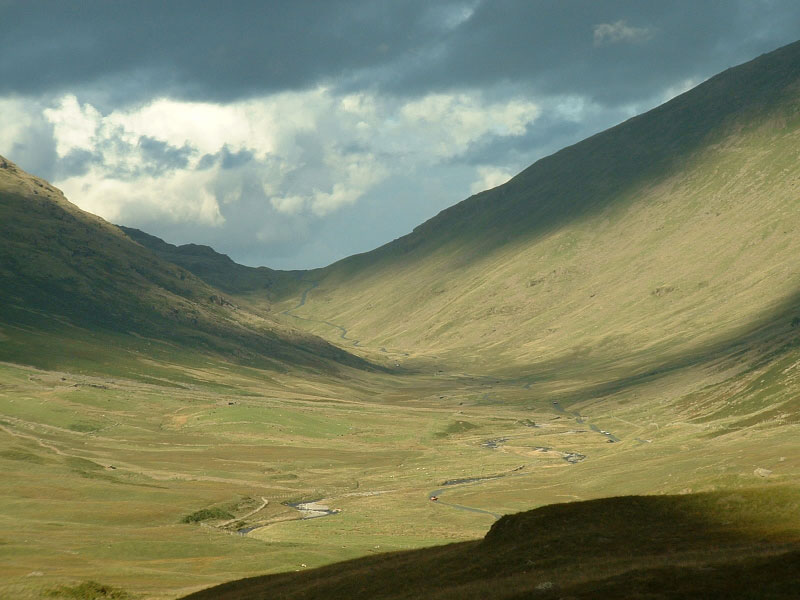
Many of the geographical features in the Lake District are the result of periods of glaciation, the most recent of which ended 15 000 years ago. Retreating glaciers carved out the huge, wide 'U-shaped' valleys, impressive lakes and deep corries which characterise this landscape.
The first evidence of man in the Lake District dates back to Neolithic times when stone axes were used to make clearings in the forest. In fact, Langdale Pike is thought to have been the site of a Neolithic Stone Axe Factory, where locals produced crude 'rough-outs' and simple blocks of stone as well as highly-polished and sought-after axes that were traded throughout Britain and Ireland. Archaeologists have dubbed this early form of economic activity the Langdale Axe Industry.

Gradually the Lakes became more populous as Celts, Romans, Angles and Vikings settled in succession. It was during Roman Times that farming became established as an industry, with sheep soon becoming the most profitable commodity. There are several breeds associated with the Lake District, of which the best-known is the tough Herdwick, built to withstand harsh weather conditions. The Herdwick sheep, which are born black and become white, were introduced by early Norsemen settlers, and Scandinavian place names such as fjell (mountain), thwaite (clearing) and keld (spring) can be found throughout the Lake District. Sheep farming remains crucial to the area today, not just in terms of the economy but also for the role it plays in maintaining the kind of landscape tourists pay to come and see; a landscape synonymous with dry stone walls and rough-grazed slopes.
During the Middle Ages these inaccessible lakes and mountains were home to poor rural communities who relied on wool, crops and leather for their livelihoods, until mining and quarrying led to a new-found prosperity in the mid 16th century. There is evidence of mining in the Lake District as far back as the 12th century, and some believe that the industry dates all the way back to Roman Times, but it was not until the 16th century that mining superseded farming as the dominant industry. The mining of coal dates back to the 13th century when the monks of St Bees Abbey supervised the opening of coal mines at Arrowthwaite, and the Lake District's long association with coal mining only ended when Haig Pit, Cumbria's last deep coal mine, closed in 1986. Slate continues to be mined today at the top of Honister Pass, while Graphite, another of the materials with which the Lake District became heavily associated, is the focus of the Cumberland Pencil Museum which celebrates the worldwide influence of the Keswick Pencil Industry, founded more than 350 years ago.
With mining and industrialisation came railways. The Kendal and Windermere Railway was the first to penetrate this hitherto inaccessible region, reaching Kendal in 1846 and Windermere in 1847. The railways were soon supplemented by steamer boats on all the major lakes, such as Ullswater, Windermere, Coniston Water and Derwent Water. Although the railways and steamer boats were built with traditional industry in mind they inadvertently encouraged the expansion of another industry, one that had been quietly taking root since the first visitors arrived in the 17th century and is now easily the biggest source of income for the Lake District: tourism. Today, Windermere Lake Steamers are the UK's second most popular charging tourist attraction.


